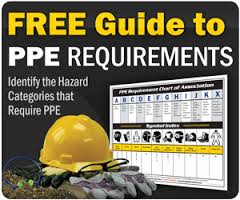Personal Protective Equipment:
There are over 75 OSHA Standards that address the need and use for Personal Protective Equipment (PPS). While PPE use can prevent injuries and illnesses, engineering controls should be the primary methods used to eliminate or minimize hazard exposure in the workplace. When controls are not practical or applicable, personal protective equipment can be used to reduce or eliminate personnel exposure to hazards. Personal protective equipment (PPE) must be provided, used, and maintained when it has been determined that its use is required and that such use will lessen the likelihood of occupational injuries and/or illnesses.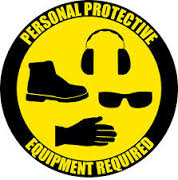
Hazards in the workplace are a fact of life. No matter what you do, there's the need for personal protective equipment on many of the jobs you perform. Health hazards, eye hazards, noise and chemicals. whether or not you use personal protective equipment is really up to you. If you choose not to, your attitude may be the biggest hazard of all. Personal Protective equipment is one of the best ways to protect your own health and safety.
Ear plugs or ear muffs can go a long way to avoid hearing loss. Adjust your muffs so they're comfortable and don't squeeze your ears. Disposable ear plugs must be clean and fitted properly. Never insert dirty ear plugs or use dirty hands when putting the plugs in your ears.
Safety glasses provide eye protection from flying chips, debris and other eye hazards. Goggles protect your eyes from chemical splashes and face shields are a safeguard when worn over other protective eyewear, such as safety glasses.
Gloves protect your hands from chemicals, rough or sharp parts and a wide range of skin protection. Keep in mind that there are literally hundreds of different types of gloves, each designed for a specific purpose, so select the proper glove for the job.
Respirators protect you against a wide variety dusts, fumes, gases, vapors and many other health hazards. One of the most misused respirators in industry is the dust mask. It's designed only for certain types of dust, but many people believe it's good for any type of hazard. A dust mask cannot be used for spray painting or other types of vapors. Each specific hazard must have the proper respirator that provides protection for that hazard. Proper fitting of respiratory equipment and the wearing of equipment as it was intended is equally important.
Hard Hats protect your head from low hanging or falling objects. Wear hard hats as they were intended to be worn and never make modifications to your hat, such as drilling air holes in the sides. Each hat is engineered for impacts and if you modify the hat, you could damage the hat to such a degree where the hat will not afford the designed protection. Bump caps are made of lesser quality plastic and are not engineered for falling objects or impacts. Bump caps are used in areas where there are bump hazards and not falling objects. Many food processing facilities use bump caps solely for the purpose of containing hair and not for protection from impacts of falling objects.
Boots and safety shoes are good personal protective equipment. Even if your job doesn't require steel toed safety shoes, leather topped shoes can provide a degree of protection from chemical splashes, petroleum products and small cuts, bruises and abrasions. Your shoes should be in good condition and the soles of the shoes should be slip resistant. Keep your footwear in good condition and always clean off your shoes before climbing ladders, or getting into vehicles. Grease or slippery shoes can create accidents.
Chemical clothing and encapsulating suits are used when there are vapor, gas and other airborne hazards. When you're engaged in this type of work, more training is necessary, to make sure you understand what protection is offered and how to specifically use, handle and store the equipment. When we talk about personal protective equipment, the basic equipment just described comes to mind, but in a work environment, you must consider many other safety devices that could be lumped together with personal protective equipment.
PPE Selection: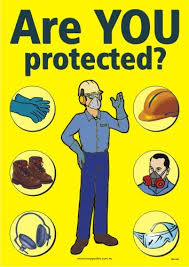
Controlling hazards.:
PPE devices alone should not be relied on to provide protection against hazards, but should be used in conjunction with guards, engineering controls, and sound manufacturing practices.
Selection guidelines.:
The general procedure for selection of protective equipment is to:a) become familiar with the potential hazards and the type of protective equipment that is available, and what it can do; i.e., splash protection, impact protection, etc.;b) compare the hazards associated with the environment; i.e., impact velocities, masses, projectile shape, radiation intensities, with the capabilities of the available protective equipment;c) select the protective equipment which ensures a level of protection greater than the minimum required to protect employees from the hazardsd) fit the user with the protective device and give instructions on care and use of the PPE. It is very important that end users be made aware of all warning labels for and limitations of their PPE.
Fitting the Device: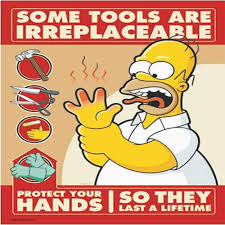
Careful consideration must be given to comfort and fit. PPE that fits poorly will not afford the necessary protection. Continued wearing of the device is more likely if it fits the wearer comfortably. Protective devices are generally available in a variety of sizes. Care should be taken to ensure that the right size is selected.
Devices with adjustable features:
Adjustments should be made on an individual basis for a comfortable fit that will maintain the protective device in the proper position. Particular care should be taken in fitting devices for eye protection against dust and chemical splash to ensure that the devices are sealed to the face. In addition, proper fitting of helmets is important to ensure that it will not fall off during work operations. In some cases a chin strap may be necessary to keep the helmet on an employee's head. (Chin straps should break at a reasonably low force, however, so as to prevent a strangulation hazard). Where manufacturer's instructions are available, they should be followed carefully.
Eye and Face Protection:
The majority of occupational eye injuries can be prevented by the use of suitable/approved safety spectacles, goggles, or shields. Approved eye and face protection shall be worn when there is a reasonable possibility of personal injury.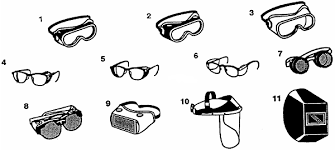
• Each employee shall use appropriate eye or face protection when exposed to eye or face hazards from flying particles, molten metal, liquid chemicals, acids or caustic liquids, chemical gases or vapors, or potentially injurious light radiation.
• Each employee shall use eye protection that provides side protection when there is a hazard from flying objects. Detachable side protectors are acceptable.
• Each employee who wears prescription lenses while engaged in operations that involve eye hazards shall wear eye protection that incorporates the prescription in its design, or shall wear eye protection that can be worn over the prescription lenses without disturbing the proper position of the prescription lenses or the protective lenses.
• Eye and face PPE shall be distinctly marked to facilitate identification of the manufacturer.• Each employee shall use equipment with filter lenses that have a shade number appropriate for the work being performed for protection from injurious light radiation.
Typical hazards that can cause eye and face injury are:
- Splashes of toxic or corrosive chemicals, hot liquids, and molten metals;
- Flying objects, such as chips of wood, metal, and stone dust;
- Fumes, gases, and mists of toxic or corrosive chemicals; and
- Aerosols of biological substances.Prevention of eye accidents requires that all persons who may be in eye hazard areas wear protective eyewear.
This includes employees, visitors, contractors, or others passing through an identified eye hazardous area. To provide protection for these personnel, activities shall procure a sufficient quantity of heavy duty goggles and/or plastic eye protectors which afford the maximum amount of protection possible. If these personnel wear personal glasses, they shall be provided with a suitable eye protector to wear over them.
Eye / Face Protection Specifications: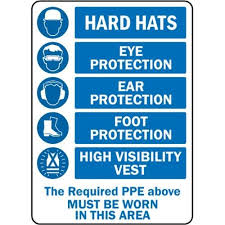
Eye and face protectors procured, issued to, and used by employees, contractors and visitors must conform to the following design and performance standards:
a) Provide adequate protection against the particular hazards for which they are designed
b) Fit properly and offer the least possible resistance to movement and cause minimal discomfort while in use.
c) Be durable.
d) Be easily cleaned or disinfected for or by the wearer.
e) Be clearly marked to identify the manufacturer.
f) Persons who require corrective lenses for normal vision, and who are required to wear eye protection, must wear goggles or spectacles of one of the following types:
1) Spectacles with protective lenses which provide optical correction.
2) Goggles that can be worn over spectacles without disturbing the adjustment of the spectacles.
3) Goggles that incorporate corrective lenses mounted behind the protective lenses.
Eye & Face Protector Use:
Safety Spectacles. Protective eye glasses are made with safety frames, tempered glass or plastic lenses, temples and side shields which provide eye protection from moderate impact and particles encountered in job tasks such as carpentry, woodworking, grinding, scaling, etc.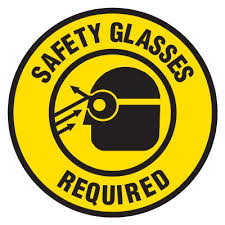
Single Lens Goggles. Vinyl framed goggles of soft pliable body design provide adequate eye protection from many hazards. These goggles are available with clear or tinted lenses, perforated, port vented, or non-vented frames. Single lens goggles provide similar protection to spectacles and may be worn in combination with spectacles or corrective lenses to insure protection along with proper vision.
Face Shields. These normally consist of an adjustable headgear and face shield of tinted/transparent acetate or polycarbonate materials, or wire screen. Face shields are available in various sizes, tensile strength, impact/heat resistance and light ray filtering capacity. Face shields will be used in operations when the entire face needs protection and should be worn to protect eyes and face against flying particles, metal sparks, and chemical/ biological splash.
Welding Shields. These shield assemblies consist of vulcanized fiber or glass fiber body, a ratchet/button type adjustable headgear or cap attachment and a filter and cover plate holder. These shields will be provided to protect workers' eyes and face from infrared or radiant light burns, flying sparks, metal spatter and slag chips encountered during welding, brazing, soldering, resistance welding, bare or shielded electric arc welding and oxyacetylene welding and cutting operations.
Head Protection:
Hats and caps have been designed and manufactured to provide workers protection from impact, heat, electrical and fire hazards. These protectors consist of the shell and the suspension combined as a protective system. Safety hats and caps will be of nonconductive, fire and water resistant 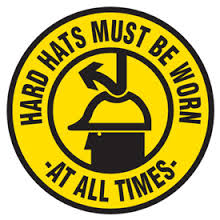 materials. Bump caps or skull guards are constructed of lightweight materials and are designed to provide minimal protection against hazards when working in congested areas. Head protection will be furnished to, and used by, all employees and contractors engaged in construction and other miscellaneous work in head-hazard areas. Head protection will also be required to be worn by engineers, inspectors, and visitors at construction sites. Bump caps/skull guards will be issued to and worn for protection against scalp lacerations from contact with sharp objects. They will not be worn as substitutes for safety caps/hats because they do not afford protection from high impact forces or penetration by falling objects.
materials. Bump caps or skull guards are constructed of lightweight materials and are designed to provide minimal protection against hazards when working in congested areas. Head protection will be furnished to, and used by, all employees and contractors engaged in construction and other miscellaneous work in head-hazard areas. Head protection will also be required to be worn by engineers, inspectors, and visitors at construction sites. Bump caps/skull guards will be issued to and worn for protection against scalp lacerations from contact with sharp objects. They will not be worn as substitutes for safety caps/hats because they do not afford protection from high impact forces or penetration by falling objects.
Selection guidelines for head protection:
All head protection is designed to provide protection from impact and penetration hazards caused by falling objects. Head protection is also available which provides protection from electric shock and burn. When selecting head protection, knowledge of potential electrical hazards is important. Class A helmets, in addition to impact and penetration resistance, provide electrical protection from low-voltage conductors (they are proof tested to 2,200 volts). Class B helmets, in addition to impact and penetration resistance, provide electrical protection from high-voltage conductors (they are proof tested to 20,000 volts). Class C helmets provide impact and penetration resistance (they are usually made of aluminum which conducts electricity), and should not be used around electrical hazards. Where falling object hazards are present, helmets must be worn. Some examples include: working below other workers who are using tools and materials which could fall; working around or under conveyor belts which are carrying parts or materials; working below machinery or processes which might cause material or objects to fall; and working on exposed energized conductors.
Foot Protection:
General requirements:
Each affected employee shall wear protective footwear when working in areas where there is a danger of foot injuries due to falling or rolling objects, or objects piercing the sole, and where employee's feet are exposed to electrical hazards.
Selection guidelines for foot protection: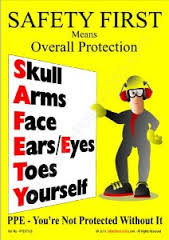
Safety shoes and boots provide both impact and compression protection. Where necessary, safety shoes can be obtained which provide puncture protection. In some work situations, metatarsal protection should be provided, and in other special situations electrical conductive or insulating safety shoes would be appropriate. Safety shoes or boots with impact protection would be required for carrying or handling materials such as packages, objects, parts or heavy tools, which could be dropped; and, for other activities where objects might fall onto the feet. Safety shoes or boots with compression protection would be required for work activities involving skid trucks (manual material handling carts) around bulk rolls (such as paper rolls) and around heavy pipes, all of which could potentially roll over an employee's feet. Safety shoes or boots with puncture protection would be required where sharp objects such as nails, wire, tacks, screws, large staples, scrap metal etc., could be stepped on by employees causing a foot injury.
Hand Protection:
General Requirements:
Hand protection is required when employees' hands are exposed to hazards such as those from skin absorption of harmful substances; severe cuts or lacerations; severe abrasions; punctures; chemical burns; thermal burns; and harmful temperature extremes. Skin contact is a potential source of exposure to toxic materials; it is important that the proper steps be taken to prevent such contact. Gloves should be selected on the basis of the material being handled, the particular hazard involved, and their suitability for the operation being conducted. One type of glove will not work in all situations. 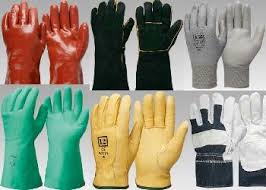
Most accidents involving hands and arms can be classified under four main hazard categories: chemicals, abrasions, cutting, and heat. There are gloves available that can protect workers from any of these individual hazards or combination of hazards. Gloves should be replaced periodically, depending on frequency of use and permeability to the substance(s) handled. Gloves overtly contaminated should be rinsed and then carefully removed after use. Gloves should also be worn whenever it is necessary to handle rough or sharp-edged objects, and very hot or very cold materials. The type of glove materials to be used in these situations include leather, welder's gloves, aluminum-backed gloves, and other types of insulated glove materials. Careful attention must be given to protecting your hands when working with tools and machinery. Power tools and machinery must have guards installed or incorporated into their design that prevent the hands from contacting the point of operation, power train, or other moving parts. To protect the hands from injury due to contact with moving parts, it is important to:
• Ensure that guards are always in place and used.
• Always lock out machines or tools and disconnect the power before making repairs.
• Treat a machine without a guard as inoperative; and
• Do not wear gloves around moving machinery, such as drill presses, mills, lathes, and grinders.
Selection guidelines for hand protection:
Selection of hand PPE shall be based on an evaluation of the performance characteristics of the hand protection relative to the task(s) to be performed, conditions present, duration of use, and the hazards and potential hazards identified. Gloves are often relied upon to prevent cuts, abrasions, burns, and skin contact with chemicals that are capable of causing local or systemic effects following dermal exposure. There is no glove that provides protection against all potential hand hazards, and commonly available glove materials provide only limited protection against many chemicals. Therefore, it is important to select the most appropriate glove for a particular application and to determine how long it can be worn, and whether it can be reused. It is also important to know the performance characteristics of gloves relative to the specific hazard anticipated; e.g., chemical hazards, cut hazards, flame hazards, etc. Before purchasing gloves, request documentation from the manufacturer that the gloves meet the appropriate test standard(s) for the hazard(s) anticipated. Other factors to be considered for glove selection in general include:
(A) As long as the performance characteristics are acceptable, in certain circumstances, it may be more cost effective to regularly change cheaper gloves than to reuse more expensive types.
(B) The work activities of the employee should be studied to determine the degree of dexterity required,
Click the below link to download the more details about PPE audit & assessment form

PPE - Hazard assessment Guideline
Click the below link to down more details about PPE
PPE - OSHA Face Sheet guidelines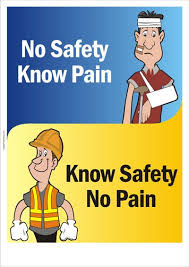
PPE - Power point presentation
Protect your skin - Animation video
